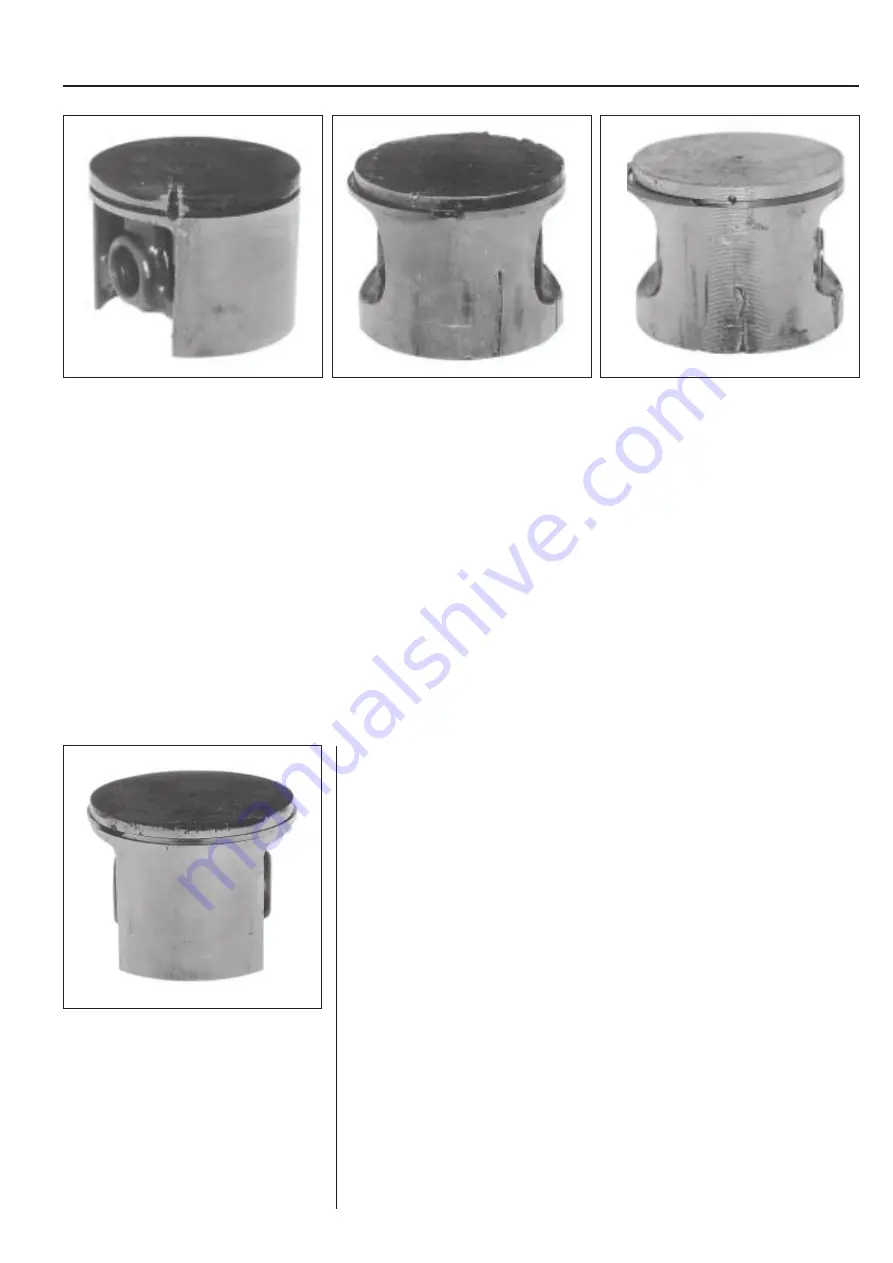
53
5
Cylinder and piston
The guide pin for the piston ring has been pres-
sed up through the piston head.
Loose vibrated guide pin for
piston ring
Excessively high engine revs can result in
the piston ring ends hammering against the
guide pin when the piston ring moves in its
groove. The intensive hammering can drive
out the pin through the head part of the
piston and also result in serious damage to
the cylinder.
Irregular grooves on the piston's inlet side caused
by a broken bearing cage.
Damage on circlips for the piston
bolt
Excessively high engine revs can cause the
circlips for the piston bolt to vibrate. The
vibrations cause the circlip grooves to wear
out, which in turn results in a reduction of the
tensioning of circlips. The circlips can
therefore loosen and cause damage to the
piston.
Deep and irregular grooves caused by a loose
circlip. Here on the piston's inlet side.
Bearing malfunction
Malfunctioning of the crank shaft or connec-
ting rod bearings is usually the result of
excessively high engine revs, which result
in overloading or overheating of the bearing.
This in turn can imply that the bearing
needles or balls slip instead of rotating,
which can result in the bearing cage breaking
up.
The broken parts can become jammed
between the piston and the cylinder wall and
result in damage to the piston skirt.
Damaged parts can also pass up through
the cylinder’s transfer ports and result in
damage to the piston sides and head, and
the cylinder’s combustion chamber.
Foreign objects
Everything that enters the engine through the inlet port, apart from clean air and clean
fuel, results in some form of irregular wear or damage to the piston and cylinder.
This type of increased wear can be noticed on the piston’s inlet side, beginning at the
lower edge on the piston skirt.
The wear is caused by poorly filtered air which passes through the carburettor and into
the engine.
Small scratches and a dull, grey surface on the
piston's inlet side resulting from fine dust particles.






























